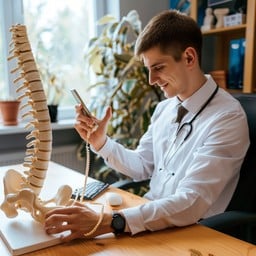Medical technology continues to reshape how providers approach joint and bone conditions. In the field of orthopedics, new innovations are improving diagnostic precision, expanding treatment options, and accelerating recovery timelines. These developments offer solutions that are less invasive and more tailored to individual anatomy and movement patterns. As techniques and tools continue to evolve, patients benefit from care that supports both immediate relief and long-term joint function.
Imaging and Diagnosis
Modern imaging tools now allow orthopedics specialists to view musculoskeletal structures in greater detail than ever before. High-resolution MRI, 3D CT scans, and real-time ultrasound help detect early signs of joint wear, soft tissue damage, or structural abnormalities. These technologies provide accurate data that supports timely decision-making and reduces the need for exploratory procedures.
In some cases, dynamic imaging can even capture movement in real time, giving providers insight into how instability or misalignment contributes to pain. One emerging area in orthopedics involves using the body’s own cells and proteins to promote healing. Biologic therapies such as platelet-rich plasma (PRP) and stem cell injections are being used to treat joint pain, tendon injuries, and cartilage degeneration. These treatments aim to support tissue repair by concentrating growth factors directly at the injury site. While long-term outcomes are still under study, many patients report reduced discomfort and better movement after receiving biologic care as part of a broader treatment plan.
Robotic-Assisted Surgical Techniques
Surgical precision is improving through the use of robotic-assisted systems. Orthopedic surgeons now use these tools to enhance accuracy during joint replacements, especially in the hip and knee. The systems combine detailed imaging data with computer-guided instruments that adjust in real time. This approach reduces soft tissue trauma and allows for more consistent implant positioning. Many patients experience shorter recovery periods and improved joint function compared to traditional methods.
Custom Implants and 3D Printing
The use of 3D printing technology is expanding in orthopedics, particularly in the development of custom implants. Surgeons can now design joint components that reflect the patient’s unique bone structure and alignment needs. This personalization supports better fit, durability, and joint mechanics. In addition to implants, 3D models are also used for surgical planning, giving providers a clearer understanding of what to expect before entering the operating room.
Wearable devices are now playing a role in post-surgical recovery and physical therapy. These tools measure metrics such as range of motion, joint stability, and gait patterns. Orthopedic teams use the data to monitor progress and adjust treatment in real time. For patients, wearables provide insight into how their bodies are responding to activity and when they may be overexerting a healing area. The information helps guide recovery decisions between clinic visits.
Arthroscopy has long been used in orthopedics, but newer tools and visualization systems are making the procedures even more precise. Smaller incisions, flexible scopes, and improved lighting allow surgeons to diagnose and treat joint problems with minimal tissue disruption. This technique is frequently used for shoulder and knee repairs, cartilage trimming, and ligament reconstruction. The benefits include less post-operative pain and faster return to movement.
Consult an Orthopedics Specialist
As these innovations become more widely adopted, orthopedic care is becoming more adaptable to different patient needs and activity levels. From young athletes recovering from injuries to older adults managing joint deterioration, new tools and techniques are allowing for more individualized treatment. Many advances also focus on earlier intervention, helping prevent long-term damage through proactive evaluation and care. The overall direction of the field continues to move toward precision, customization, and reduced recovery time.
